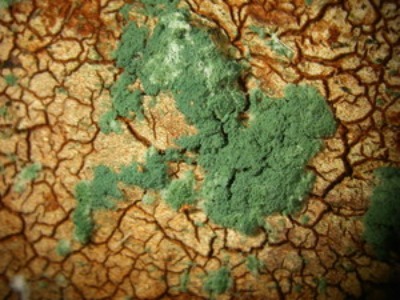
WEB EXCLUSIVE
Mould fungi can cure plants
We know them from our garden, from damp
cellars or from the fridge – mould fungi can be found almost everywhere.
Sometimes fungi can be very useful for plants.
Nov. 1, 2011, Vienna, Austria — We know them from our garden, from damp cellars or from the fridge – mould fungi can be found almost everywhere. Their success is due to their remarkable versatility: depending on external conditions, they can choose quite different lifestyles. Sometimes fungi can be very useful for plants. They can shield the plants from diseases and at the same time boost their growth.
Genetic studies at the Vienna University of Technology show that fungi can be used as an eco-friendly alternative to conventional fertilizers and plant protecting agents. The research results have now been published in Nature Reviews Microbiology.
 |
| T. harzianum (PHOTO: WALTER M. JAKLITSCH) |
MASTERS OF VERSATILITY
Mould fungi can grow inside plants just as well as on the bark of a tree – or even on top of other fungi. It can be extremely hard to classify fungi just by optical inspection. Their appearance varies immensely depending on the lifestyle of the individual fungus. Also, mould fungi can go through different development stages, much like caterpillars and butterflies.
“Only genetic analysis shows which fungus belongs to which species – and what a certain species is capable of,” Irina Druzhinina from the TU Vienna explains.
WEAPONRY ENCODED IN THE GENES
The genome of three important species of the genus trichoderma has been completely sequenced. Computer analysis can now show the evolutionary relationship between the fungi, and it can determine special capabilities and strong points of the fungal species.
“A closer look at the genome shows us what the mould fungi can do, and how versatile they are”, says Druzhinina.
In the fungal DNA, there are lots of genes associated with a sensitive perception of the outside world. Therefore, the fungi can react to subtle signals from their environment. The trichoderma are excellently equipped to ingest sugar – from other plants, or even from other fungi. They can attach to wet or dry surfaces, to human skin, to plants or roots. In addition, there is an arsenal of chemical weaponry encoded in their DNA.
Trichoderma can attack other fungi or bacteria with powerful toxins.
NATURE'S CHEMICAL PLANTS
All this knowledge about fungal DNA is necessary in order to understand the 160 other trichoderma-species, which are being investigated at the TU Vienna.
For years, Professor Christian Kubicek’s research group has been working on these fungi. By now, an internationally renowned collection of data and specimens has been established.
“We want to understand the evolutionary history of the fungi, and at the same time study their lifestyles in different environments,” Druzhinina explains. That way, it is possible to choose exactly the right fungus for a particular application. With sufficient knowledge about the genetics of the fungi, certain species of mould fungus can be used instead of chemical plant protecting agents.
In the best case scenario, the fungus even boosts the growth of the plant.
“The fungi could be applied to fields and meadows – in much the same way as artificial plant protecting agents are being used now”, says Druzhinina.
PROTECTING THE ECOSYSTEM
It is important not to disturb the ecosystem; fungi should only be used where they occur naturally. “To cure the plant diseases of coffee beans in Africa, we will have to use different fungi than those we have here in Europe,” Druzhinina explains.
But everywhere in the world, a vast variety of mould fungi can be found. We just have to understand their genes sufficiently well to use the right species for the right applications.
Print this page